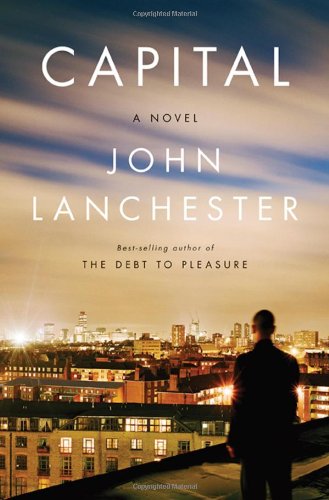Nick Murray’s Simple Wealth, Inevitable Wealth,
[1] deserves to be the exception to my rule of never reviewing “How to Invest” books.
Stylistically, Murray’s prose is the Yin to Nassim Taleb’s Yang.[2] Murray is gentle, meditative, and modest in affect, part financial advisor and part Zen master, contemplating the beauty of compounding investment returns[3] and inter-generational wealth-building.
Yet for all his gentle style, he’s no less sure of himself or passionate when it comes to what he sees as simple, but overlooked principles for building wealth over time.
Since I’ve come to adopt his views as my own, it’s worth highlighting the best of them here.
- Murray questions the common journalistic narrative[4] as it mostly misleads rather than informs. Even worse, the journalistic narrative rarely asks the key questions for wealth building such as “What is Risk?”, “What does wealth mean to me?” and “Who am I?” (I’ve hyper-linked to my earlier consideration of the latter two questions.)
- Timing the market is a fool’s game[5], whereas time in the market will be your greatest natural advantage.
- The highest value of an investment advisor is often to tell you to not do anything. This sounds a lot like advice from Benjamin Graham.
- Only equities provide the possibility of growing wealth in perpetuity. I would add – but Murray does not – some other risky assets in addition to equities for certain people and institutions. Murray has a particular fondness for stock mutual funds, and, for the vast majority of people, I concur that that’s all you need to grow wealth. My own definition of ‘equities’ would include ownership in not only stock mutual funds, but also allow for a broader variety of risky vehicles such as real estate, traditional business ownership, commodity investments, or other volatile assets.
- For the individual investor, bonds are an “anxiety-management tool” but not a wealth-building tool. Unfortunately – given current interest rates – this is truer now than it was when Murray first published his book in 1999. At this time, fiduciaries who depend on managing money in perpetuity cannot afford to be in bonds, a big, under-recognized problem – in my opinion.
His strongest points, which he spends the bulk of the book proving to my satisfaction are the following:
First, owning a diversified portfolio of equities over the long-term does not carry significant risk of capital loss. The diversified portfolio of equities is subject to volatility, but volatility passes away under long-term time horizons[6] and should not be conflated with risk.
Second, building wealth through the steady accumulation of equity mutual funds is simple,[7] and the result of this behavior, over a lifetime, is inevitable wealth.
Third, in contrast, bonds or riskless assets will not build wealth, but rather condemn the investor to a long-run loss of purchasing power. If your goal is to build wealth – rather than provide current income – you cannot afford to be invested in bonds.
Murray’s main message – as restated above – may be manipulated, distorted, exaggerated or parodied, but cannot be proved wrong.
Professionally I’m a “fixed-income/bond guy” through and through,[8] so I believe in the uses and opportunities of bonds and safe cash-flows. Despite my experience and biases, I believe Murray on his own terms, is absolutely, capital “R” Right.
Please see related post: All Bankers Anonymous Book Reviews in one place.
[1] Full title of the book: “Simple Wealth, Inevitable Wealth – How You And Your Financial Advisor Can Grow Your Fortune In Stock Mutual Funds”
[2] I greatly admire and recommend Taleb, but as I’ve written on Fooled by Randomness and Black Swan, his prose style can be abrasive.
[3] Clearly I’m partial to the power of compound interest, the most powerful force in the universe.
[4] Also known as the “Financial Infotainment Industrial Complex”
[5] On timing, Murray writes: “Time in the market, as opposed to timing the market, is not a way of capturing the long-term returns of equities; it is the only practicable way. You have to stay in it to win it.” This makes a lot of sense if you understand the magical power of compound interest.
[6] He defines long-term as, at minimum, 5 years.
[7] Murray explains that, while the process is simple, simple is not the same as easy. It’s incredibly hard, in fact, to have enough left over, after paying your bills, to constantly invest in equities month after month, year after year, for your entire life. But if you can do that, wealth is inevitable. Hence, the title of the book.
[8] I’ve been a bond salesman, and fixed-income hedge fund manager. I have no professional experience with the stock market. Mostly I find conversations about stocks and the stock market incredibly uninteresting. But I still believe you have to have your money exposed to them, or other forms of risky equity, to build wealth.
Post read (17825) times.










